Andy Lloyd's Dark Star Blog

Blog 18 (September 2014)
The Secrecy
Surrounding the 1983 IRAS Discovery
Over ten years ago, I had
the pleasure of corresponding with a researcher who, at
the time, was almost 80 years old. John Bagby had
come across my work on brown dwarfs and a possible
companion object in the outer solar system over the
internet, and took the time to send me some of his
papers from California (1).
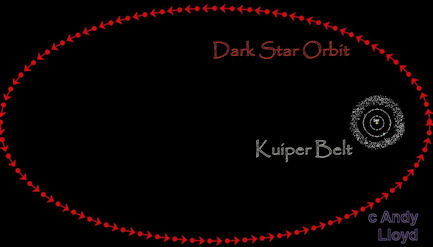
He had been
interested in similar ideas for some years, it
transpired, and had written several scientific papers
outlining his theories, and the evidence he had
accumulated regarding candidate objects. One, in
particular, ticked a number of boxes for me, and I wrote
about his contribution to the field in 'Dark Star'.
"An amateur astronomer who long argued for the
existence of a substantial tenth planet was the engineer
John Bagby. He wrote several papers outlining evidence
he had put forward for the existence of a Massive Solar
Companion, or ‘MSC’. Bagby was quite sure that such a
body existed, and he claimed to have data to prove it,
if only someone would listen to him. He shared his
information with astronomers including Drs Harrington
and Van Flandern at the US Naval Observatory, Dr
Anderson at JPL, and Dr Marsden, who collates sightings
of new solar system bodies. He also publicly presented
his work at seminars and scientific meetings in the
1970s.
"Bagby wrote unpublished papers between 1978 and 1980
that set out his observational data and theoretical
underpinning for either a tenth planet, or a massive
solar companion. He claimed that the discovery of Pluto
in Gemini was located 180 degrees opposite to the
massive undiscovered planet, and that the pre-discovery
prediction work of Lowell and Pickering could be put
down to a classical "direction finding and distance
ambiguity". In other words, Lowell had been right, but
had looked in the wrong direction. Planet X lay in
Sagittarius, Bagby claimed.
"This proposal from the late 1970s finds itself in
accordance with my own analysis of the location of the
Dark Star. Was Bagby onto something? Problems emerge
when we come to look at his proposals about the size and
distance of the binary companion. Bagby was proposing a
full-blown brown dwarf in the vicinity of the Kuiper
Belt. We’d be able to see such a massive object with a
regular telescope. How had he arrived at this
fantastic, utterly impossible, conclusion?
It turns out that Bagby was interested in the work of
one E.R. Harrison who, in 1977, postulated the existence
of a massive nearby body, lying in Sagittarius, required
to explain observational anomalies regarding a "pulsar
period time derivative". Pulsars are highly regular
emitters of strong radiation. If a gravitational field
comes between a pulsar and us, as observers on Earth,
then the highly specific data from them pulsar will be
altered slightly. This will allow us to imply the
existence of a dark gravity field in the way of the
light from the pulsar, which is what Harrison proposed
in Sagittarius. Is this anomalous gravitational field
due to the Dark Star?"
(2)
Now, I happen to agree
about the Sagittarius theory for the approximate
aphelion position of Nibiru, so these considerations
were of quite some interest to me. This work by
Harrison (3) seemed to provide good evidence (4),
particularly as this academic paper is cited by Richard
Muller, et al in their landmark paper on extinction
event periodicities and Nemesis (5).
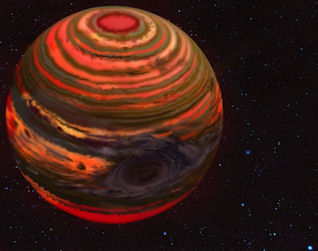
The
information provided by Bagby seemed even more relevant
when looking through one of his papers which sought to
draw a connection between a massive solar system object
and periodicity of earthquakes (a subject close to the
heart of many modern Planet X enthusiasts). One of
his proposed candidate objects has an implied orbital
period of 3652 years (6), very similar to that proposed
by Zecharia Sitchin for the planet Nibiru. Indeed,
in a footnote Bagby makes this very point:
"Dale
Welsh of Ace Electronics loaned me literature
(7)
suggesting that these values almost coincide with the
period of a long-ago (1958) hypothesized "twelfth
planet" due to Zecharia Sitchin. It was
anticipated to have had a very eccentric orbit and was
called Nibiru by him." (6)
One
should be just a little bit wary though. Bagby was
an engineer who carried on his scientific studies well
into his retirement. Some of his methods included
"gravitational astronomy", but using some
not-exactly-box-standard equipment for the measurement
of gravity waves:
"In addition to my own studies
of the IR and EF/EF* [empty field]
evidence for a massive belt of MSC-type objects and/or
tenth planets, considerable gravitational perturbation
evidence also has been found. This includes
evidence I derived from earthquake and volcano incidence
as well as from several "gravitational wave antennas" of
my own construction and the vibrating earth itself." (6)
His work
really does seem remarkably cutting-edge for 1996,
especially when you consider the sheer scale of the
technology brought to bear in the emergent field of 21st
Century gravitational-wave astronomy:
"There are currently several scientific
collaborations hoping to make the first direct detection
of gravitational waves. There is a world-wide network of
ground-based detectors, these are kilometre-scale laser
interferometers...It is hoped that ground-based
detectors shall make their first detection by the end of
the decade. An alternative means of detection is
using pulsar timing arrays (PTAs). These use existing
radio telescopes, but since they are sensitive to
frequencies in the nanohertz range, many years of
observation are needed to detect a signal and detector
sensitivity improves gradually. Current bounds are
approaching those expected for astrophysical sources.
Further in the future, there is the possibility of
space-borne detectors."
(8)
So, does
this put Bagby into the tin-helmet brigade, knocking up
pseudo-scientific kit in his shed? I don't think
so. He was evidently successful as an industrial
engineer (he had been chief principal engineer at Bell
and Howell, and a senior scientist at Hughes Aircraft),
and he clearly spent a lot of time poring over infrared,
radio microwave data in the hunt for hidden outer solar
system bodies. He also showed some keen insight
into the political side of science, and what it was like
to be an outsider presenting what he considered to be
important, cutting-edge ideas to a selectively deaf
scientific academic establishment. That sceptical
view of the establishment may have influenced the tone
of this letter he wrote to me in 2003:
"Dear Andy,
At the time I sent you the large packet of papers, I
could not find this Boston Globe reprint
(9).
Walter Sullivan of the New York Times called me to see
if I was being invited to attend the meeting, but I
certainly was not.. The subject was soon dropped
from all further discussion after IRAS. My opinion
is that when the UK and Dutch people agreed to let our
JPL "manage" the data, it was (IRAS) heavily censored,
and has been ever since"
John"
(1)
The
article he discusses appeared in the Boston Globe on
Saturday 29th October 1983, and described the
soon-to-be-released discovery of an enormous ring
circling the solar system at a distance of approximately
100AU, or just less than 10 billion miles away.
It's not clear to me whether this ring turned out to
just be the Kuiper Belt, or was something quite
different. The discovery that was actually
announced - as promised by NASA on 9th November of that
year - became the subject of the famous Washington Post
article of 30th December 1983 (10).

NASA presented
what was a pretty vague notion of what IRAS had so
unexpectedly picked up, including the potential for it
to be a Jupiter-sized planet beyond Neptune. It's
interesting to see the preceding Boston Globe article
that John Bagby sent me, which was full of speculation
about what NASA was about to announce. Bagby
highlighted the sections of the article that dealt with
the secrecy surrounding the IRAS discoveries:
"Both scientists asked not to be
identified because the space agency has gone to great
lengths to maintain secrecy." (9)
And:
"IRAS is a joint project by
scientists from the United States, Great Britain and the
Netherlands. The secrecy surrounding the new IRAS
results was imposed by the National Aeronautics and
Space Administration, and many astronomers are critical
because the findings haven't been released yet.
"This is the tightest-kept thing I've seen," one
scientist complained. "I can't imagine them being
able to keep it so long."" (9)
One has
to wonder, then, why was there so much secrecy over an
announcement that, in the end, was so vague? Was
Bagby right to be sceptical about the way JPL took over
the latter part of the project, a charge also levelled
against the Americans by British science journalists
Martin Redfern and Nigel Henblest (11)? The
article was published in "New Scientist" on 10th
November 1983 (the day after the aforementioned NASA
press conference), and discussed the discovery of an
object in space by the infra-red space telescope in the
constellation of Sagittarius, of an object potentially
‘several times heavier than Jupiter’.
It appears as
though British scientists at the time were accusing
their American colleagues on the IRAS project of keeping
the information of this find to themselves. The British
scientists publicly questioned why the Americans had
"been keeping quiet about it in recent weeks" (11).
If, as is often implied, this discovery was much ado
about nothing, then why all the fuss about the
preceding secrecy?
Written by Andy Lloyd, 18th
September
2014
References:
1) Correspondence from
John Bagby, 23 May
2003
2)
Andy Lloyd
"Dark
Star: The Planet X Evidence" Timeless Voyager
Press, 2005, pp80-1
 The Dark Star
The Dark Star
3) Edward Robert
Harrison
wikipedia.org
wiki
4) Harrison, E.R.
"Has Sun a Companion Star?" Nature, 270: 324-326,
1977
nature.com articles
5) Marc Davis, Piet Hut &
Richard A. Muller "Extinction of species by periodic
comet showers", Nature, 308, 715-717, 19 April 1984
nature.com article
6) John P. Bagby
"Outer-solar-system Bodies as a Source of Periodicity in
Earthquakes", Geophysical Cycles, 46(1): 21-2,
1996
7) David Hatcher Childress
"Extra-Terrestrial Archaeology" Adventures Unlimited
Press, 1994
 Extraterrestrial Archaeology, New Revised Edition
Extraterrestrial Archaeology, New Revised Edition
8)
"Gravitational-Wave Astronomy"
wikipedia.org
wiki
9)
Robert Cook "Ring Around Solar System is Discovered by
Satellite" Boston Globe, 29 October 1983
10)
Thomas O'Toole, Washington Post Staff Writer "Possibly
as Large as Jupiter; Mystery Heavenly Body Discovered"
30 December 1983
washingtonpost.com archive
11) M. Redfern & N. Henbest
"Has IRAS Found a Tenth Planet?" New Scientist, 10 November 1983
A Martian Riddle
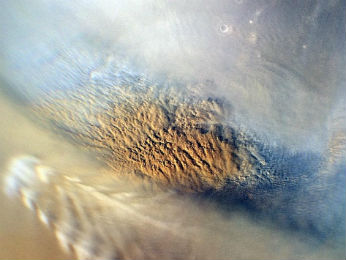
The Maven Orbiter has secured its position around Mars, and will
shortly begin its investigation into why the Martian atmosphere
has eroded so badly over time:
"The present-day atmosphere of Mars, composed mostly of
carbon dioxide, is extremely thin, with atmospheric pressure at
the surface just 0.6% of the Earth's surface pressure. The
Martian landscape, though, retains channels that were evidently
cut by abundant, flowing water - proof that the planet had a
much denser atmosphere in the past. Some of the air would
certainly have reacted with, and been incorporated into,
minerals at the surface. But the most likely explanation for
its loss is that the solar wind - the great outflow of energetic
particles from the Sun - has simply eroded it through time.
This has been possible because, unlike Earth, the Red Planet
lacks a protective global magnetic field, which is capable of
deflecting the abrasive assault from our star.
"Some of Maven's instruments will concentrate on the Sun's
influence, looking at how much energy it puts into the planet and
its atmosphere. Others instruments will investigate the composition
and behaviour of the atmosphere itself, and this will involve some
"deep dip" manoeuvres that take Maven closer to Mars' surface so it
can sample air molecules directly.
"The intention is to measure the rates at which these different
molecules are being lost today, distinguishing between the various
processes responsible. Scientists will use this information to get
some insights into the history of the Martian climate - from the
time billions of years ago when it was warmer and wetter, and
potentially habitable to life, to the present environment which is
cold and desiccated."
(1)
I have a bit of a problem with this theoretical concept as to
why the atmosphere has eroded. The deep, wide river channels
across the Martian surface indicate that at some point there was
an abundance of water flowing on Mars - which indicates a once
healthy weather system transporting water about through the
atmosphere to regenerate the flow on the surface. That meant a
much thicker atmosphere.
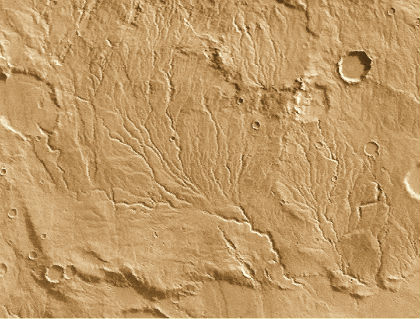
But how long ago? Billions of years,
they say. For instance, here was the thinking when the
Curiosity sent back remarkable images of an ancient river bed in
2012
"Curiosity's telephoto camera snapped shots of three rocky
outcrops not far from the rover's landing site inside Gale
Crater. One of them, called "Goulburn", had been excavated by
the rover's own landing gear. The other two were natural
outcrops dubbed "Link" and "Hottah". All three, and Hottah in
particular, were made of thin layers of rock that had been
cemented together. When the rover zoomed in, it saw rounded
pebbles in the conglomerates and in surrounding gravel that were
fairly large – up to a few centimetres in diameter. On Earth,
roundness is a tell-tale sign that rocks have been transported a
long way, since their angular edges got smoothed out as they
tumbled. The Mars rocks are too big to have been blown by wind,
so the team concluded it must have been flowing water. This
dovetails with orbital images hinting that the rover landed in
an alluvial fan, a feature that is formed on Earth by water
flows.
The best Mars scientists can do is estimate the age of the
surrounding surface based on counting craters. On a large scale,
the older an area is, the more craters it likely accumulates
over time.
"We think what we're looking at is several billion years
old," Dietrich says of the region around Gale Crater. "How to
get better than that, I don't know. This is a common discussion
point."
(2)
Michael Malin, who runs the Curiosity camera system and analyses
the data returning from Mars, makes the same point:
"It's difficult to say when the water flowed. "We have no
real way of estimating ages on Mars quantitatively," said
Michael Malin, "Probably several billion years would be the
canonical estimate by most scientists about how old things are
in this region of Mars.""
(3)
And on that consensus also hangs the potential for atmospheric
erosion to be taking place over billions of years through the
action of solar radiation - although, quixotically, that cosmic
process of high atmosphere erosion would surely be taking place
gradually, as the solar wind ionises and then drives off upper
atmospheric gases lacking any planetary magnetic field to
protect them. If the atmosphere was lost in this
way, then it must have been ripped away early on in the planet's
history - perhaps during the late, heavy bombardment ~3.9
billion years ago which destroyed Mars' shielding magnetic
field:
"Earth's global magnetic field comes from an
active dynamo - that is, circulating currents at
the planet's liquid metallic core. A
similar dynamo once churned inside Mars, but for
reasons unknown it stopped working four billion
years ago. The patchwork fields we see now
are remnants of that original magnetic field.
"How do scientists know when the dynamo
turned off? "Mars has been kind to us," explains
[Dave] Mitchell [a space scientist at the
University of California at Berkeley].
"There are two large impact basins, Hellas and
Argyre, about four billion years old that are
demagnetized. If the dynamo was still operating
when those impact features formed, the crust
would have re-magnetized as they cooled. The
dynamo must have stopped before then.""
(4)
So, all of this change must have taken place around 4 billion
years ago: major impacts wiping out the shielding magnetic
field, thus the loss of Martian atmosphere and the subsequent
drying out of the entire planetary landscape to leave it in some
kind of dead stasis for the next four thousand million years.
Now, that's
one heck of a long time for the surface of Mars to remain
essentially unchanged. Which then begs the question; why haven't the alluvial river bed surface features
eroded over time through other mechanisms?
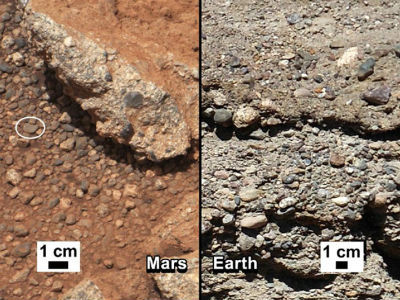
Image Credits: NASA/JPL-Caltech/MSSS and PSI
The rounded
pebbles in the river beds are still extant on the surface,
unimpeded by debris and detritus accumulated over such an
immense time period. Consider: Mars is famous for its dust
storms, which fluctuate seasonally and regionally but are
regular enough, and often spectacular. These storms
self-evidently shift and subsequently dump dust onto the
surface. They
must, therefore, also contribute to landscape erosion
through the action of wind-swept dust, even if the force driving
them is less than that on Earth. The dumping of the dust
itself is evidently non-negligible:
"Besides the research value in better understanding storm
behavior, monitoring the storm is also important for Mars rover
operations. If the storm were to go global, the Opportunity
rover would be affected most. More dust in the air or falling
onto its solar panels would reduce the solar-powered rover's
energy supply for daily operations."
(5)
Okay, so this might not be significant over a few months or
years, even if NASA express anxiety about the effect it might
have on Opportunity's solar panels. But over billions of
years, this surely must work significant cumulative geophysical effects
upon the landscape. I don't know about you, but those images of
dry river beds on the Martian surface look pretty fresh to me,
with their chiselled surface features and bare river-bed
pebbles. Which leaves me with a quandary. We are given to
understand, essentially, that Mars is some kind of museum, held
in a static position since it lost its water and atmosphere
billions of year ago. This might work on a planet with no
atmosphere at all (the Moon, Mercury etc) but Mars evidently
continues to enjoy significant atmospheric events,
despite its low pressure and temperature atmosphere. So, why is
its surface assumed to have been frozen in time for billions
of years?
My gut feeling is that the Maven orbiter scientists will discover that
there is too little current erosion of the upper Martian
atmosphere by the action of the solar wind to account for the
long-term erosion of almost the entirety of the planet's
atmosphere. Given that the Sun was not substantially
hotter or fiercer in the distant past, that means that something
catastrophic took place to drive change. That would
support the consensus view that substantial catastrophic change
took place 4 billion years ago, to essentially kill the planet.
I would also add that this event, which took place during the
late, great bombardment, was one and the same as Sitchin's
Celestial Battle between the watery precursor Earth called 'Tiamat'
and Nibiru/Marduk (6), which I contend is a sub-brown dwarf Dark
Star (7).
But could the Martian surface really have remained so untouched
by erosion for all of that time? I would argue that water
flowed on the surface of Mars much more recently than 4 billion years ago
- a concept which flies in the face of the current
atmospheric conditions, but nevertheless seems self-evident.
The discovery earlier this year of a 'new' Martian crater
exhibiting similar alluvial river bed patterns seems to support
such a notion:
"New research has shown that there was liquid water on Mars
as recently as 200,000 years ago. The results have been
published in the international scientific journal Icarus (9).
"We have discovered a very young crater in the southern
mid-latitudes of Mars that shows evidence of liquid water in
Mars' recent past" says Andreas Johnsson at the University of
Gothenburg. The southern hemisphere of Mars is home to a
crater that contains very well-preserved gullies and debris flow
deposits. The geomorphological attributes of these landforms
provide evidence that they were formed by the action of liquid
water in geologically recent time."
(8)
In the second quote above, mention is made of how the density of
cratering can be used to age a surface region. That assumes,
essentially, that the craters are not subject to the kind of
erosion patterns and filling-in that occurs on Earth, causing
many to disappear over long periods of time. In other
words, the same issue we have considered with the dry river
beds. As an alternative, one might
consider that heavy density cratering might actually present the
opposite picture - that of sudden, and relatively recent catastrophism. The
kind of irregular but violent cataclysmic events that could also
significantly erode the Martian atmosphere over a long period of
time, but also reshape the landscape through the sudden release
of trapped water and gas from below the Martian regolithic
surface.
It's not a
cold war of atmospheric attrition taking place on Mars, just the
usual hot war of cosmic bombardment that has created this
riddle, I think. It's time we reconsider the common set of
assumptions about the immutability of the Martian surface over
several billions of years that tend to inform this debate.
Written by Andy Lloyd, 22nd September 2014
1) Jonathan Amos "Mars Maven mission arrives in orbit" 22
September 2014
bbc.co.uk news
2) Lisa Grossman "Why
do we think Curiosity found an old Mars riverbed?" 28
September 2012
newscientist.com article
3) Lisa
Grossman "Curiosity snaps signs of vigorous stream on Mars" 28 September 2012 (article on
longer available online)
4)
Tony Phillips "The Solar Wind at Mars" 31 January 2001,
with thanks to Barry
nasa.gov news
5)
Guy Webster "Spacecraft
Monitoring Martian Dust Storm" 21 November 2012
nasa.gov mission_page
6) Zecharia Sitchin "The Twelfth Planet" Avon, 1976
 The
Twelfth Planet
The
Twelfth Planet
7)
Andy Lloyd
"Dark
Star: The Planet X Evidence" Timeless Voyager
Press, 2005
 The Dark Star: The Planet X Evidence
The Dark Star: The Planet X Evidence
8) University of
Gothenburg. "Traces of recent water on Mars: Liquid water on
Mars as recently as 200,000 years ago" 25 April 2014
sciencedaily.com release
9) A. Johnsson, D. Reiss, E. Hauber, H.
Hiesinger, M. Zanetti. "Evidence for very recent melt-water and
debris flow activity in gullies in a young mid-latitude crater
on Mars", Icarus, 235: 37-54, June 2014
sciencedirect.com article/
Blowing Away the Interstellar Fluff
A while ago in
Dark Star Blog 4, and
more recently in Dark Star
Blog 12, I wrote about new findings about the asymmetric nature of the
heliosheath surrounding the solar system. Astronomers put this unexpected
asymmetry down to collections of 'interstellar fluff' pressing up against the
boundaries of our Sun's magnetospheric domain. I've always been sceptical
of that position, believing the fluff to be a bit of a fudge.
Recent experiments into the presence of interstellar medium within the solar
system, including the rather neat 'helium focusing cone', have indicated that
the solar system is indeed devoid of the kind of ultra-light cosmic material
which comprises the interstellar clouds (1).
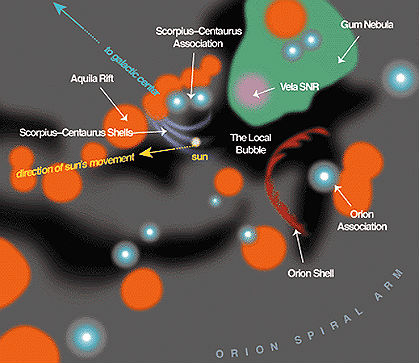
nasa.gov
image
We appear to be living within
a bubble, one that was created by all of this material having been driven off by
multiple local supernova explosions about ten million years ago:
"Between the
planets and the stars of our galaxy is not just empty space. There are gasses,
dust, ions - and more - sweeping around. When astronomers poked around in our
solar system for it, they found little to nothing. It was like we were living in
a virtually empty hole, one that has only a single atom per every liter of
space. Around the same time, sensors launched outside of Earth's
atmosphere revealed an abundance of something else coming from all directions -
x-ray radiation. The idea that we live in a bubble was born: So much
interstellar medium was gone, because the exploding supernovas have blown it
away, and left us surrounded with their remnants of radiating gas."
(2)
What is perhaps surprising is the dramatic size of the bubble
in which we find ourselves: it transpires that interstellar space within
about a hundred parsecs of the Sun is pretty much devoid of cool absorbing gas,
leading to a belief that a searing bubble of hot X-ray emitting gas is to be
found beyond this distance (1). Given that a parsec is about 3.26 light
years, then this bubble extends out to beyond 300 light years from the Sun!
Which begs the question of where the interstellar fluff is supposed to have come
from that NASA argues is creating the dent in the heliosheath? If the
local interstellar medium has been so comprehensively driven away by multiple
supernova events 10 million years ago, then why should there be any remnants
obligingly left behind at the solar system boundary? It all seems too
convenient. More likely, the interaction creating these asymmetries can be
explained by something far more substantial than mere fluff.
Written by Andy Lloyd, 22nd September 2014
References:
1)
M.
Galeazzi et al "The origin of the local 1/4-keV X-ray flux in both charge
exchange and a hot bubble", Nature, 512, 171–173, 14 August 2014
nature.com article
2) Ben Brumfield "Scientists: Solar system inside
a searing gas bubble" 28 August 2014,
with thanks to Lee
cnn.com article
Crescent-shaped Monument Raises
Questions in Israel
The footprints of the Mesopotamian gods appear to have
extended well into Israel. Archaeologists are puzzling over a remarkable
stone structure whose purpose is lost in antiquity:
"A
lunar-crescent-shaped stone monument that dates back around 5,000 years has been
identified in Israel. the structure is massive - its volume is about 14,000
cubic meters (almost 500,000 cubic feet) and it has a length of about 150 meters
(492 feet), making it longer than an American football field. Pottery excavated
at the structure indicates the monument dates to between 3050 B.C. and 2650 B.C.
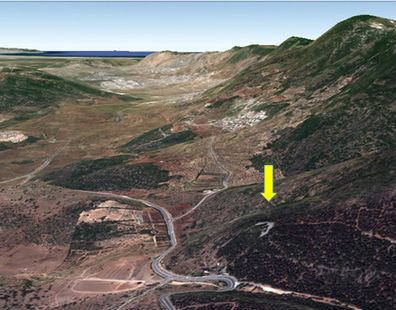
"Archaeologists previously thought the structure was part of a city wall, but
recent work carried out by Ido Wachtel, a doctoral student at the Hebrew
University of Jerusalem, indicates there is no city beside it and that the
structure is a standing monument.
"The
structure's crescent shape stood out in the landscape. The shape may have had
symbolic importance, as the lunar crescent is a symbol of an ancient
Mesopotamian moon god named Sin, Wachtel said. An ancient town called Bet
Yerah (which translates to "house of the moon god") is located only a day's walk
from the crescent-shaped monument. As such, the monument may have helped mark
the town's borders. While the monument is located within walking range of the
city it is too far away to be an effective fortification." (1)
It seems quite a lot of effort to go to if you simply wanted
to mark out your territory. A monumental edifice of that proportion, and
lacking any obvious defensive properties, can only have one purpose to my mind -
to be seen from the air.
I suspect that if Zecharia Sitchin was still with
us, he would have said that this Moon Marker was one of several monuments
designed to guide airborne craft into the Sinai peninsula. He believed
that there was a significant spaceport in Sinai, and that some of the major
ancient monuments located across the Middle East acted as way markers for
spacecraft making their final approach to Earth. This seems like a pretty
outlandish idea, and I for one am not convinced by the practicalities of the
ancient ATC system Sitchin proposed, but there may well be merit in considering
how the locals wished to express their worship towards the gods of the sky -
meaning literally the gods traversing the skies above them. This huge
crescent-shaped tribute in stone might be evidence of that very concept in
practice.
Written by Andy Lloyd, 22nd September 2014
Reference:
1) Owen Jarus "Massive 5,000-Year-Old Stone Monument Revealed in Israel" 25
September 2014
with thanks to Lee
livescience.com article
Stone Circles on Golan Heights
were Bronze Age Habitations
Continuing our occasional series on the remarkably
widespread archaeological remains of stone corral-like circles across
Africa (1), and the Middle East (2,3). A report available online
by Israeli archaeologist Yonathan Mizrachi describes in detail his
group's work at a site called Mithram Leviah, on the lower Golan
Heights.
It appears to share similarities with stone circles found
across the Syrian desert. His team discovered the presence of
early Bronze Age occupational remains within the circles, indicating
that they were ostensibly used for habitation:
"We
believe that it was built by the urban populations who inhabited the
Golan during the third millennium B.C.E. The urban population lived in
enclosures like Mithram Leviah, described in “Rediscovered! The Land of
Geshur,” in this issue. Similar enclosures to Mithram Leviah have been
found all over the central Golan, mostly on strategic locations
fortified with massive stone walls. Until recently scholars were puzzled
as to the function of these enclosures. Some suggested they were central
gathering areas for cattle; others interpreted them as large fortified
settlements. The Leviah enclosure for the first time established that
these Golan enclosures were in fact used for habitation. The excavations
there yielded Early Bronze (I–III) occupational remains wherever the
excavators dug." (4)
Mithram Leviah is one of several ancient sites in the
Biblical area known as Geshur, which is located in the Southern Golan
between the eastern shore of the Sea of Galilee and west of the fertile
plains of Bashan, along the major trade routes (The King’s Highway).
The name Mithram Leviah means "The Enclosure of the Lioness" and was
once a densely populated city from the Early Bronze Age (3100-2200
B.C.).
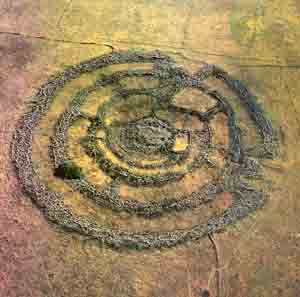
Rogem Hiri (6)
The specific area in question with the stone circles is Rogem Hiri (meaning 'Stone Heap of the Wild Cat") which contains
five huge stone circles with 125,000 cubic feet of stone, some weighing
as much as 5.5 tons, dating back to 3000 B.C. (5).
"This
unique site consists of five concentric stone circles, the outer one of
which is nearly a third of a mile in circumference. In the center
is a massive, carefully constructed cairn over 60 feet in diameter."
(6)
One can imagine ancient Bedouin-style tents
distributed haphazardly within the various semi-circular zones marked
out by these defensive walls, providing a Bronze Age small city in the
desert for the Amorites or Hittites, or whichever semi-nomadic peoples
chose to occupy this 5000 year old site over time. Perhaps there
was also a ceremonial or spiritual aspect to this sacred place (7), or archaeo-astronomical function to the site's
location and orientation (8).
What is clear is that this is a fine
example of the sort of stone circular structures distributed across the
Levant (and down as far as the Southern countries of Africa); one that
was evidently used as an ancient Bronze Age settlement.
Written by Andy Lloyd, 22nd September 2014
References:
1) Michael Tellinger "Michael Tellinger
and the Ancient Stone Structures of Africa" 6 October 2012
internationalresearchsociety.wordpress.com article
2) Andy Lloyd "Syrian Stone Circles Connection"
November 2013,
andylloyd.org/darkstarblog08.htm
3) Andy Lloyd "Syrian Circles Update" May 2014
andylloyd.org/darkstarblog14.htm
4) Yonathan Mizrachi "Mystery Circles", BAR 18:04,
Jul/Aug 1992
with thanks to Lee
cojs.org article
5) "Geographical Divisions: V. The Hill Country of the
Amorites" (article on longer available online)
6) BAS Library: Yonathan Mizrachi "Mystery Circles:
Newly discovered walls in the Golan puzzle archeologists"
bib-arch.org publication
7) Richard Benishai "Unlocking the mysteries of
Rujm-El-Hiri" 2014
(article on longer available online) with thanks
to Bruce
8) Anthony Aveni and Yonathan Mizrachi "The Geometry
and Astronomy of Rujm el-Hiri, a Megalithic Site in the Southern Levant"
Journal of Field Archaeology, 25(4): 475-496, Winter, 1998
jstor.org article
Cretan Spirals
The above item about the ancient circular habitation
on the Golan Heights might draw a parallel with another semi-mysterious
archetypal pattern - the Cretan Spiral.

This pattern forms the
basis for a number of esoteric labyrinths, not least of which appears to
be at the Glastonbury Tor site in Somerset, as related by Gary Smith:
"During a visit to Somerset England in 1983, I took a trip with my
Father to Glastonbury, to climb the Tor, and see the remnants of St.
Michael's church, a roofless tower, on top of a 518 foot hill on the
outskirts of this small market town. While walking around the Tor, we
noticed terraces cut deep into the side of the hill, and we later
learned that the terraces are part of what is believed to be an ancient
pathway from the Bronze age, running around the hill, and conforming
to the design of The Labyrinth, the Cretan spiral of Minoan legend.
"The
design of the Labyrinth is very old. The spiral is so far flung it's
not even considered to be of Minoan invention. The same maze can be
found as the chief sacred image of the Hopi people in Arizona, called
the "Mother and Son." The cross at the centre represents the Sun as well
as a child being held by the mother." (1)
My first impression of this is to wonder whether this
is a highly distorted Winged Disc or Winged Cross symbol, given its
antiquity and Eastern Mediterranean origin. Either way, it appears
to have wound its way across Europe and seemingly as far as the Americas
during ancient times (not entirely unrealistic, this, given the
widespread evidence for intrepid ancient explorers seeking new lands to
the West, usually across the relatively short mid-Atlantic stretch
between West Africa and Brazil (2)).
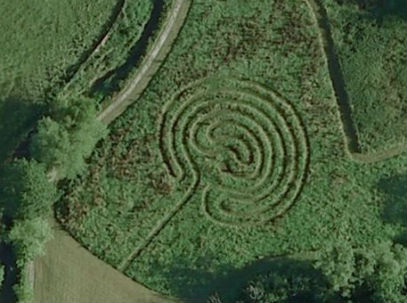
Lee Covino came
across a report of a similar spiral cropping up in the English county of
Warwickshire:
(3)
What struck me about the spiral pattern of this
formation near Coventry is how similar it was to those carved into the
Cochno Stone near Glasgow, which I described a couple of months ago on andylloyd.org/darkstarblog16.htm.
It's amazing how frequently these spirals are appearing at the moment,
and I wonder as to what links them all together. Most likely they
are another piece of evidence indicating the migration of ancient
peoples and the inter-connectedness of cultures that were previously
considered to be isolated from one another.
Written by Andy Lloyd, 22nd September 2014
References:
1) Gary Smith "The Cretan Spiral Decoded"
cretanspiraldecoded.com/
2) Frank Joseph "The Lost Colonies of Ancient America"
New Books, 2014, see:
andylloyd.org/lostcolonies.htm
3) Duncan Gibbons "Mystery of strange pattern in
ground near Coventry" 19th September 2014,
thanks to Lee, and to comment on this webpage by Scotty Matthews.
coventrytelegraph.net news
Planet-X, aka, Kronos and Star
of Bethlehem
Correspondence received 23rd September
2014, from Mr Gregory Gross, outlining some of his personal experiences
regarding Planet X over an extended period of time, and his beliefs
regarding its presence in our skies.

I'm not quite sure what to
make of some of the more outlandish parts of this letter, but I
reproduce his comments here in entirety for readers who might find it of
interest, or perhaps for researchers who find it corroborates other
similar accounts:
Dear
Andy Lloyd,
"Did you know there
is a photo of Planet-X on the Internet? I saw it from Los Angeles
at the same time it was photographed from a ship off Brazil, on 16
January 1958. It Appeared to be close to them in the atmosphere at
the same time it appeared to be close to me in the atmosphere. At the
same time there was a similar report in Clearwater, Florida. There
must not have been anyone looking in Bethlehem, because I know it did
look close there too.
I Know
it is Planet-X because it traced out an X in the sky. It traced out the
symbol for the Star of Bethlehem (that is not the symbol for a Fish). Of
course astronomers did see it. One observatory in Australia
published a photo of it in the Los Angeles Times around 1969, before it
was seized by the Church of Einstein.
Planet-X seemed to me to be about the size of Saturn, with a bronze
ring, and a tiny star in its core, a thousand times brighter than the
Sun. The main surface could be viewed when the bright light was
shielded by the ring. The surface had colored stripes like Saturn
but the surface looked exactly like the surface of the Sun, it had
sunspots.
Planet-X made a hairpin orbit around the Sun. It appeared to
almost touch the north and south poles. It moved so that its north pole
was the front and the ring was on the side, as it passed over the Sun's
poles the ring was parallel to the Sun's pole, when it came even with to
the Sun's equator on the far side the ring was parallel to the Sun's
equator. Coming to the horizon Planet-X passed behind a telephone
pole 10 feet from me, it was twice as wide as the pole.
Planet-X also emitted such a strong magnetic pulse that "the rocks cried
out." When the pulse hit the Griffith Observatory the quartz lens
in the telescope beeped and screamed so loud it could be herd (sic) for
20 miles. The rocks also glowed pink. I got a sunburn on my
back from the star in the planet, a 4 inch wide stripe across my back.
The heat felt like 600 degrees, and lasted about 10 seconds.
At the time of the "WOW Signal" I was in the Smithsonian Museum looking
at a big crystal ball when it started blinking extremely bright pink and
beeping, the beeping and flashing became faster until it glowed
continuously and made a noise like 40 metal chairs being dragged across
the floor (there were no chairs there). Then it slowed down until it
stopped."
Sincerely,
Gregory A Gross
Previous Blog
Next Blog

Dark Star Blog Index

Dark Star
Books Index

You
can keep informed of updates
by following me on Twitter:
www.twitter.com/#darkstarandy

Or like my Facebook Page:
https://www.facebook.com/darkstarandylloyd
















